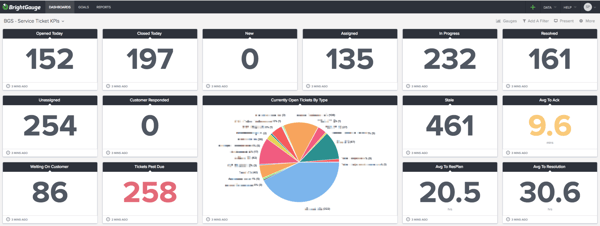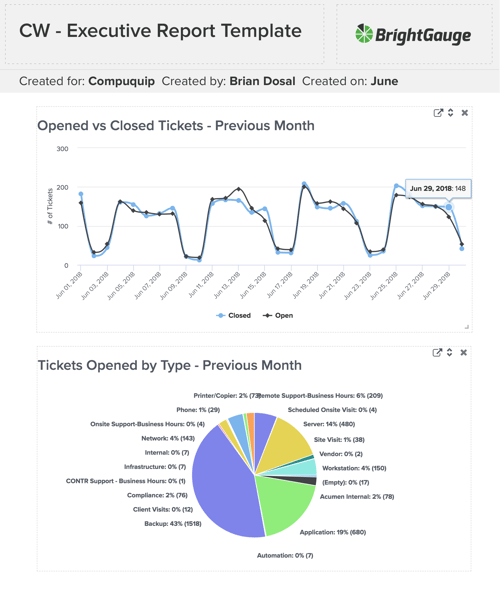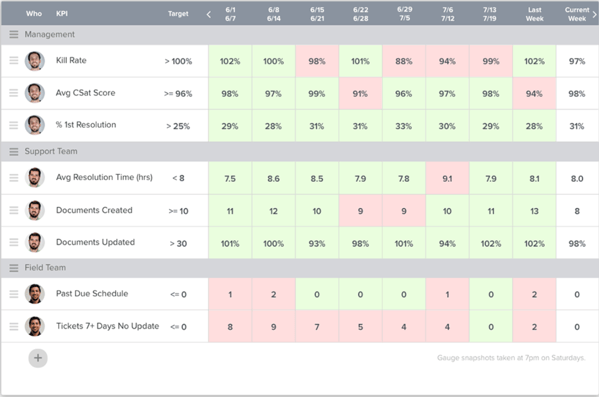How to Build a Better Team With the Right KPIs

When you’re growing or scaling your business, you want to put team members in place who will grow with you. But how do you ensure you’re building a successful team?
Hiring and retaining the right employees is a challenging task that every business leader and manager faces. Between trying to get a read on a person during a short interview process and making sure you implement a seamless onboarding strategy, it’s natural for mistakes to be made or for things to fall through the cracks.
In our experience, we have found that setting the right key performance indicators (KPIs) is an effective way to make sure you’ve got the right people on hand to get the job done.
How KPIs can influence your hiring process
Determining the right KPIs for your organization really sets the stage for success down the line. KPIs help us stay focused and show us where we need to go to grow. We like to think of them as the shiny, bright North Star in our data-filled sky.
Using KPIs to guide your hiring process can be a really smart strategy. Here are 2 reasons why.
1. Know what career experience you’d like a candidate to have.
When you know exactly what you want to accomplish and what is going to help you move your business needle, it helps you understand the type of experience a person needs to have in order to help you meet your goals.
Sure, it can be hard to gauge the extent of a person’s background by glancing over their one-page resume, but this is why the in-person interview is so important. Use your KPIs to help you figure out the right questions to ask during this crucial interview process.
Let’s say one of your KPIs is MRR YTD (Monthly Recurring Revenue Year-to-Date). You definitely want this to be a growing number year-over-year and you definitely want a rockstar sales team in place to make this happen.
During your interview process with that potential sales rockstar, you must ask critical questions to dig deep into the inner workings of how this person contributes to overall success, such as, “What actions have you taken that directly contributed to your company’s MRR? What’s an example of a SMART goal you set tied to MRR?” and so on.
Being less vague and more specific with your questions and scenarios will help the candidate paint a clearer picture of their capabilities and the particular ways in which they’d contribute to your team.
Of course, there’s likely going to be a hierarchical structure to your team, but consider how each individual team member’s role can play a part in making progress on KPIs.
2. Know and define the exact role you’d like a candidate to fill.
Another benefit to using KPIs in your hiring process is that knowing the direction in which you want to take your company can really help you define a team member’s role.
Knowing your ultimate goal, so to speak, lets you figure out the steps you need to take to get there. If you know what needs to be done, you can set up your team so that each member is tackling some of those steps. In other words, job descriptions essentially become a blueprint for success.
Not only will you know the exact role you’d like each member of your team to play, but you can parlay the details of that role much more clearly to your candidates. Realistic expectations will be set on both ends, which is always a great way to start the journey towards success.
Track your KPIs every day

After you’ve filled your roles and feel confident that you have an outstanding team under your wings, it’s time to get a handle on your KPIs.
Make sure every single person in the company has visibility into those KPIs and knows where you stand at any given time. We can’t stress enough how important it is to be transparent with your team members and to make them feel like they’ve got a voice and an influence.
Make it a priority to monitor your KPIs on a regular basis. A business intelligence tool like BrightGauge makes this incredibly simple to do.
BrightGauge works by connecting to many popular business tools on the market, like ConnectWise, Webroot, Salesforce, Backup Radar, Quickbooks, IT Glue, and more so that you can put all your data and important KPIs on display in one, easy-to-view dashboard. And remember how we mentioned how important transparency is? BrightGauge creates powerful, interactive, and custom reports for clients and internal teams in just a few minutes, so you can foster long-standing relationships built on trust.

Because you can easily monitor your KPIs on dashboards at any given moment with BrightGauge, team visibility is never an issue. We recommend that you display your dashboards on TVs around your office, so any employee can quickly glance over and get a snapshot of your metrics whenever needed.
BrightGauge has another feature that really empowers your employees and gets them amped up about KPIs. It’s called Goals, and through this feature, you can assign each team member 3-4 goals per quarter based on overall company KPIs and have them mark whether they are on or off-track on a weekly basis. Because all employees have visibility into goals, this is a powerful way to create a sense of accountability and help employees stay motivated. Plus, because goals are tied to KPIs, it’s a great way to ensure that you’re really making progress as a company.

With BrightGauge, data is at your fingertips and those insights ultimately lead to decisions that will have a really positive impact on your business. See BrightGauge in action to understand what we mean.
To sum it up, put KPIs first
The main message we are trying to get across here is that KPIs should be at the core of everything you do, including your hiring process. Truly understanding what matters to your company and what your company goals are can help you determine who the right people are to get you to success.
It also helps your potential employees understand what their role would be and why they would be doing it.
When everyone experiences this kind of alignment, a great company culture is born. Add the power of data to the mix, and you’re bound to become an unstoppable force.
Not sure what kind of metrics you should be monitoring? Check out our free whitepaper, ‘Internal Metrics That Matter for MSPs’.
Free MSA Template
Whether you’re planning your first managed services agreement, or you’re ready to overhaul your existing version, we've got you covered!



